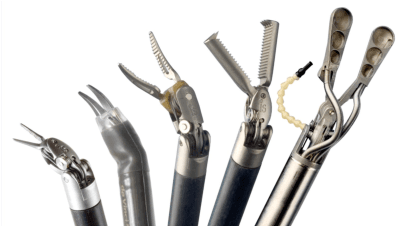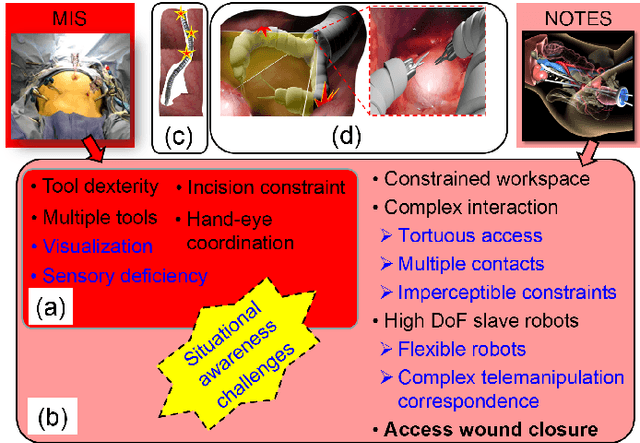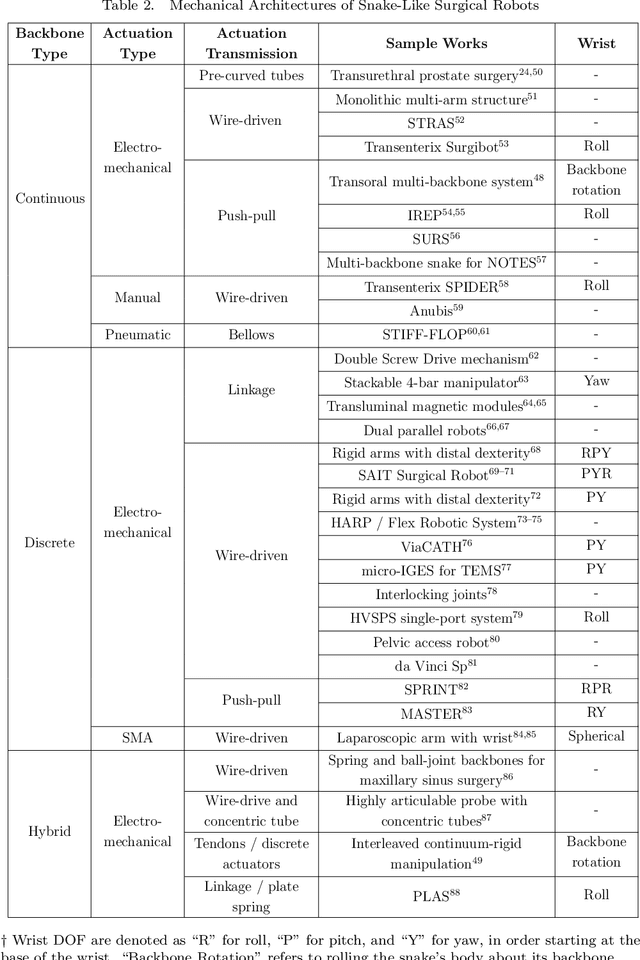Snake-Like Robots for Minimally Invasive, Single Port, and Intraluminal Surgeries
Paper and Code
Jun 11, 2019



The surgical paradigm of Minimally Invasive Surgery (MIS) has been a key driver to the adoption of robotic surgical assistance. Progress in the last three decades has led to a gradual transition from manual laparoscopic surgery with rigid instruments to robot-assisted surgery. In the last decade, the increasing demand for new surgical paradigms to enable access into the anatomy without skin incision (intraluminal surgery) or with a single skin incision (Single Port Access surgery - SPA) has led researchers to investigate snake-like flexible surgical devices. In this chapter, we first present an overview of the background, motivation, and taxonomy of MIS and its newer derivatives. Challenges of MIS and its newer derivatives (SPA and intraluminal surgery) are outlined along with the architectures of new snake-like robots meeting these challenges. We also examine the commercial and research surgical platforms developed over the years, to address the specific functional requirements and constraints imposed by operations in confined spaces. The chapter concludes with an evaluation of open problems in surgical robotics for intraluminal and SPA, and a look at future trends in surgical robot design that could potentially address these unmet needs.
 Add to Chrome
Add to Chrome Add to Firefox
Add to Firefox Add to Edge
Add to Edge